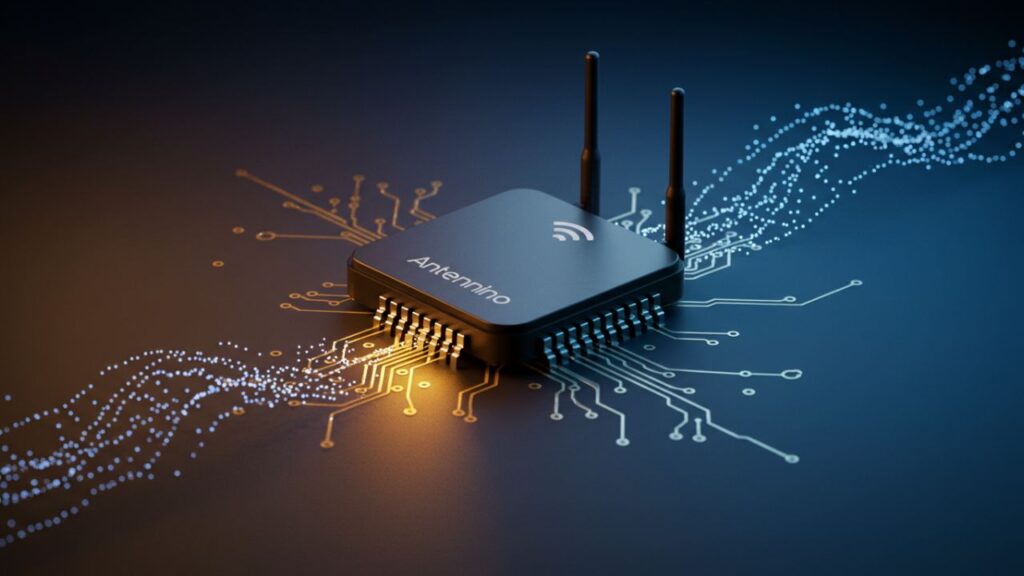Antennino is a small, versatile wireless development board designed to simplify Internet of Things (IoT) projects and compact electronics. Built for low power consumption and high adaptability, it caters to makers, hobbyists, and engineers who want to add wireless capabilities to their creations without complex setups.
This microcontroller platform integrates sensors, wireless modules, and a battery-friendly architecture into a footprint small enough to fit into wearable devices, environmental sensors, and other miniature electronics. Its open-source design encourages customization, enabling a broad community of developers to share ideas, firmware, and applications.
Antennino Design and Hardware
At its core, antennino typically uses an ATmega microcontroller, combined with a radio frequency module such as an nRF24L01+ for 2.4GHz wireless communication. This pairing offers a solid balance between processing capability and efficient data transmission.
The board is often shaped like a small stick or dongle, with easily accessible pins for sensor connections. It supports both 3.3V and 5V logic, giving it flexibility with a variety of peripherals. Many versions come with onboard temperature sensors, voltage monitors, and an antenna interface optimized for strong signal performance in small devices.
Battery life is a major focus. Sleep modes and efficient wake-up mechanisms make antennino ideal for applications that need to run for months or years on coin cells or small Li-ion batteries.
Antennino Wireless Communication Features
Wireless connectivity is one of antennino’s strongest points. It’s designed for short- to mid-range communication, making it ideal for:
-
Wireless sensor networks in agriculture or smart homes
-
Remote monitoring stations
-
Mesh networks for data relaying
The nRF24L01+ module enables point-to-point or point-to-multipoint communication, allowing multiple antennino boards to exchange data without a central Wi-Fi router. This reduces power usage and increases reliability in areas with limited internet access.
Antennino in IoT Applications
Because antennino is open-source and easy to program using Arduino IDE, it fits naturally into the IoT ecosystem. Developers can create:
-
Environmental sensors measuring temperature, humidity, or light
-
Wearable devices tracking movement or vital signs
-
Asset trackers using low-power communication
-
Smart agriculture solutions monitoring soil moisture and weather conditions
Its compact design allows embedding in enclosures no larger than a matchbox, making it possible to hide technology within everyday objects.
Antennino Programming and Development Environment
One reason antennino is gaining attention is its compatibility with Arduino libraries. This lowers the learning curve for those already familiar with microcontroller programming. Standard Arduino functions work with the board’s peripherals, while specialized libraries extend its wireless capabilities.
The board can be programmed via USB or serial adapters. Once the firmware is loaded, the antennino can operate autonomously, communicating wirelessly with other boards or gateways.
Antennino Power Management
Energy efficiency is crucial for wireless devices. Antennino boards use techniques like:
-
Deep sleep modes that cut power consumption to microamp levels
-
Timer-based wake-ups for scheduled data collection
-
Interrupt-based waking for event-driven responses
Some builds include solar charging circuits, allowing antennino-based devices to remain deployed indefinitely without manual battery changes.
Anten-nino Community and Open-Source Resources
The antennino project benefits from a growing community of makers who share:
-
3D-printable cases and enclosures
-
Open-source firmware templates
-
Antenna design tips for range improvement
-
Examples of mesh network deployments
Forums, GitHub repositories, and dedicated blogs provide a constant stream of updates, ensuring that even beginners can follow step-by-step guides to create their first wireless network.
Real-World Anten-nino Case Studies
Smart Greenhouse Monitoring:
In an agricultural project, multiple antennino nodes were deployed inside a greenhouse to monitor temperature, humidity, and soil moisture. Data was sent wirelessly to a central hub, which triggered fans or watering systems when needed.
Wearable Fitness Tracker Prototype:
A student team used antennino to build a lightweight, wireless heart-rate and step counter. It connected to a smartphone app via a gateway, proving its capability in wearable tech.
Disaster Relief Communication Mesh:
Volunteers set up antennino boards in a disaster-struck area to establish a temporary communication network, enabling relief teams to coordinate efforts without internet infrastructure.
Antennino Advantages and Limitations
Advantages:
-
Small size for easy embedding
-
Low power consumption for long deployments
-
Open-source hardware and software
-
Compatible with Arduino IDE
Limitations:
-
Shorter range compared to Wi-Fi or LoRa
-
Limited processing power for heavy computation
-
Requires separate gateway for internet connectivity
Future of Antennino Technology
With increasing demand for low-power, compact IoT solutions, antennino’s role is set to expand. Future iterations may include:
-
Enhanced security features for data encryption
-
Built-in Bluetooth Low Energy alongside existing RF modules
-
Expanded sensor integration for specialized industries
-
AI-assisted firmware for smarter data processing at the edge
As technology trends push for smaller, more efficient devices, antennino provides a practical platform for both experimentation and deployment.
Getting Started with Anten-nino
For those interested in trying antennino:
-
Obtain a development kit from open-source hardware vendors.
-
Install Arduino IDE with the necessary board definitions.
-
Start with simple wireless communication sketches.
-
Integrate sensors and power-saving functions for real-world projects.
With patience and creativity, it’s possible to create anything from a basic temperature logger to a complex multi-node monitoring network.
Conclusion
Antennino is a small but capable wireless development board ideal for IoT and DIY electronics. Its low power consumption, open-source design, and compatibility with Arduino make it a favorite among hobbyists and professionals alike. From agriculture to wearable tech, anten nino enables creative solutions that run efficiently in compact spaces. With ongoing community support, it continues to evolve as a cornerstone in low-power wireless innovation.





